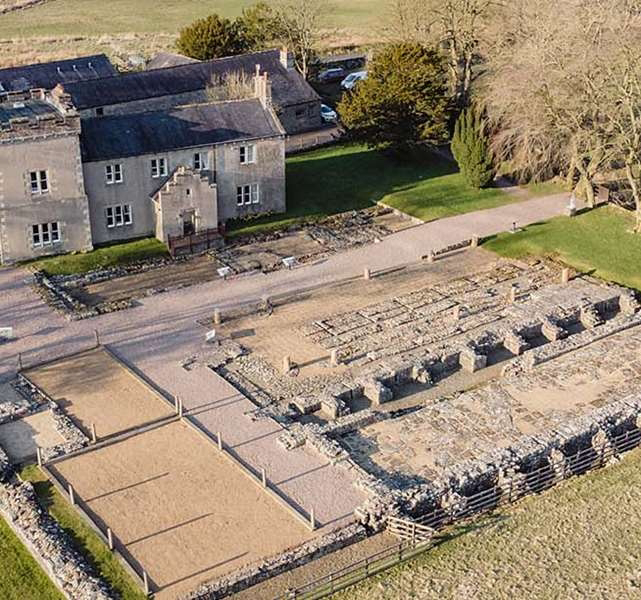The Rock of Clyde
So, I've been spending an inordinate amount of time and energy trying to fit Arthur into the South of England, primarily because the Welsh traditon on Badon insists Arthur fought at the Liddington Badbury. This is so despite the spelling Badon, which is the normal British reflection of English Bathum. My choice for Arthur's Badon in the North has always been Buxton with its Bathamgate Roman road.
A southern Arthur, if we want an identifiable historical candidate, can only successfully be linked to either Ceredig son of Cunedda/Cerdic of Wessex, or to a son of St. Illtud. At least that is what my own extensive research has shown. Both figures carry with them some unresolvable problems that detract from their attractiveness. While compelling to a certain degree, neither is particularly convincing.
A potential Uther with no real drawbacks is Ceredig Wledig of Aloo. This king was called crudelisque tyranni by St. Patrick, a Latin phrase easily rendered into the Welsh as Uther Pendragon. Aloo is believed to be a reference to Alclud, and hence to the kingdom of Strathclyde. This kingdom was home to the ancient Dumnonii, whose tribal name is identical to that of the Dumnonii of the South, a region that included the Cornwall often connected to Arthur.
The Dalriadans could certainly have gotten the name Arthur from intermarriage with the Strathclyde Britons. During Aedan of Dalriada's floruit, Rhydderch was king of Alclud. We are told in the HISTORIA BRITTONUM that Rhydderch and other great kings of the North, including Urien, fought against the Saxons.
Alclud is the Rock of Clyde, of course, and Adamnan renders it into Latin as Petra Cloithe. It makes sense that a famous British Arthur from Alclud who gave his name to the Irish Dalriadan royal family may explain why Pedr or Petrus of the Irish-descended royal family of Dyfed gave his son the same name.
For good measure, we should not forget Arthur son of Bicoir, who killed the Irish Mongan with a stone. The "stone theme" thus seems rather pervasive.
Now, the two lines of descent for Rhydderch in the Harleian MS. are hugely conflicting. And Jocelyn's claim that Ceredig of Aloo belonged to Wallia is, frankky, odd. It is possible Wallia refers to Ceredigion in Wales and is thus merely an error.
But Cambria or Wales and Cumbria are, in fact, the same word. Both regions were home to the Cymri. The Roman fort of Uxellodunum towards the west end of Hadrian's Wall, the vallum, was nicknamed Petrianis, the fort of the Ala Petriana, whose founder bore the name Petra.
The Petrianis fort was referred to in early antiquarian sources as Arthuriburgum, 'Arthur's fort.' It lies close to the forts of Camlan, Avalon and even a possible prototypical Grail fort. A Dea Latis or Lake Goddess is attested from Aballava/Avalana.
Is it possible, I wonder, that Ceredig Wledig the Terrible Chief-warrior didn't, in fact, rule from Alclud/Petra Cloithe, but from Petrianis in Cumbria on the Wall?
If so, then the Dalriadans may have obtained the name Arthur via some connection with Stanwix. This does, however, ruin the Northern Dumnonii-Southern Dumnonii correspondence.
In the past, I pushed Banna/Birdoswald on the Wall as the home of Uther, the site of an extraordinary sub-Roman complex. The fort there may actually have been referred to in the Roman period as the place of the Dragon (see my treatment of the Ilam Pan). I utilized the Galfridian dragon tradition to derive Uther from the late Roman period draco-devoted Dacian garrison at that fort. St. Patrick came from the same place.
I hypothesized the name Arthur came from nearby Carvoran, whose Dalmatian garrison might well have preserved the Artorius name (given L. Artorius Castus' Dalmatian connections and the Artorii who were present in Dalmatia). Carvoran's Roman name, incidentally, was Magnis, 'STONE.'
Lastly, I pointed out that both Birdoswald and Castlesteads/Camboglanna were in the Irthing Valley, a river possibly deriving its name from a Cumbric word meaning 'Little Bear.' The Arthwys eponym of the North stood for the Bear People and I situated them in the Irthing Valley. It seemed logical the Artorius name, becoming Arthur, would lend itself well to Cumbric speakers, who would see their word for bear, 'arth,' in the name.
[As an aside, Mabon, Uther's servant according to the PA GUR, was worshipped at Castlesteads.]
While that all seems to work marvelously, an Arthur at Banna did not explain why the Irish Dalriadans and Irish Dessi-descended Dyfed dynasty took the name Arthur for their royal sons.
THE ONLY THING I COULD SAY ABOUT THE NORTHERN ARTHUR THAT WAS UNDENIABLE IS THAT THE ARTHURIAN BATTLES REALLY DID SEEM TO BELONG IN THE NORTH AND IT WAS ONLY THERE THAT MOST COULD BE PLACED WITHOUT RESORTING TO LINGUISTIC OR GEOGRAPHICAL OR HISTORICAL MANIPULATION OF ONE KIND OR ANOTHER.
So if we're putting Arthur in the North, where's the best place? Strathclyde? Stanwix/Arthuriburgum? Birdoswald?
It's to this question I will return in a future post.



No comments:
Post a Comment
Note: Only a member of this blog may post a comment.